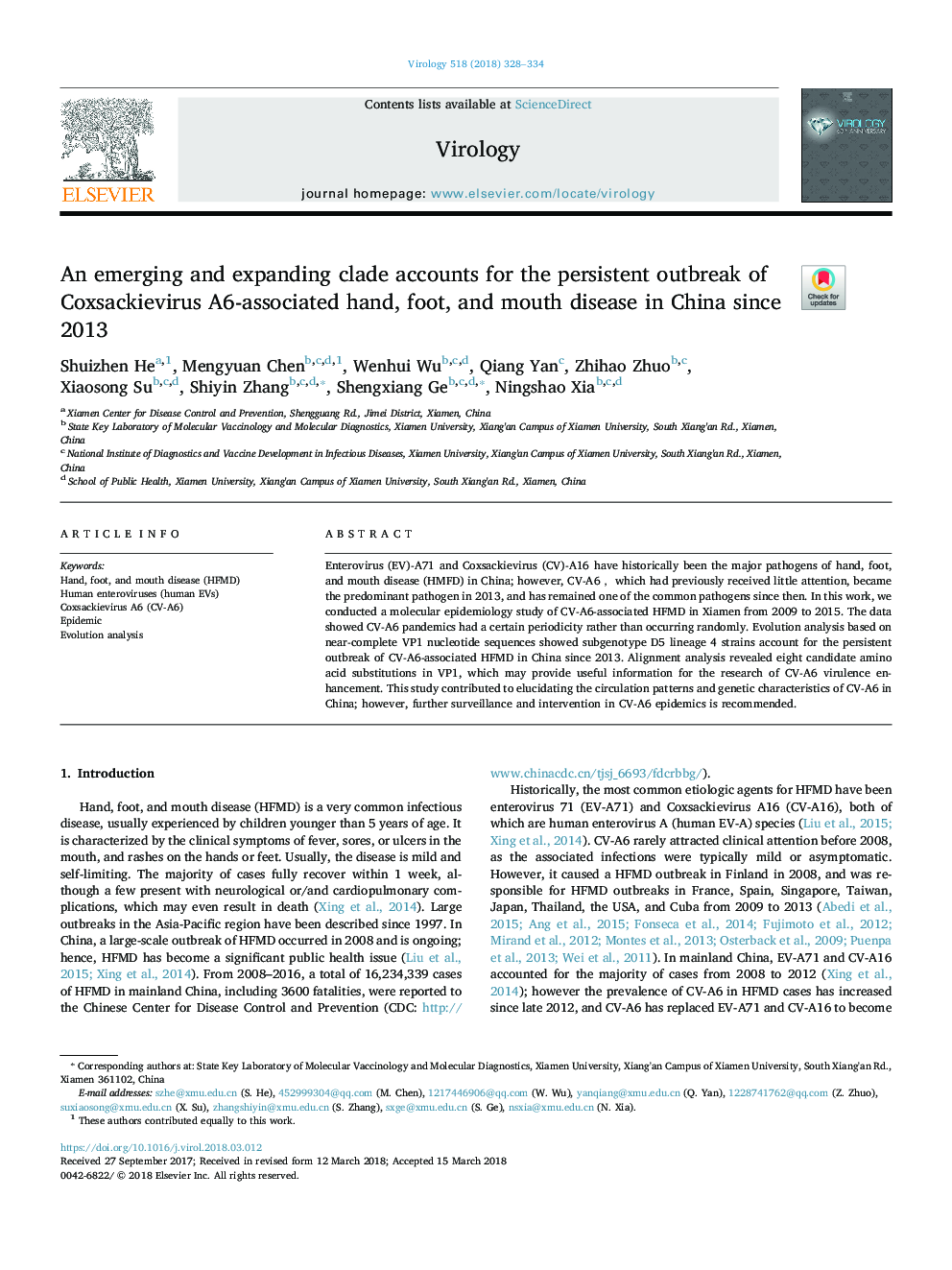| Article ID | Journal | Published Year | Pages | File Type |
|---|---|---|---|---|
| 8751475 | Virology | 2018 | 7 Pages |
Abstract
Enterovirus (EV)-A71 and Coxsackievirus (CV)-A16 have historically been the major pathogens of hand, foot, and mouth disease (HMFD) in China; however, CV-A6ï¼ which had previously received little attention, became the predominant pathogen in 2013, and has remained one of the common pathogens since then. In this work, we conducted a molecular epidemiology study of CV-A6-associated HFMD in Xiamen from 2009 to 2015. The data showed CV-A6 pandemics had a certain periodicity rather than occurring randomly. Evolution analysis based on near-complete VP1 nucleotide sequences showed subgenotype D5 lineage 4 strains account for the persistent outbreak of CV-A6-associated HFMD in China since 2013. Alignment analysis revealed eight candidate amino acid substitutions in VP1, which may provide useful information for the research of CV-A6 virulence enhancement. This study contributed to elucidating the circulation patterns and genetic characteristics of CV-A6 in China; however, further surveillance and intervention in CV-A6 epidemics is recommended.
Related Topics
Life Sciences
Immunology and Microbiology
Virology
Authors
Shuizhen He, Mengyuan Chen, Wenhui Wu, Qiang Yan, Zhihao Zhuo, Xiaosong Su, Shiyin Zhang, Shengxiang Ge, Ningshao Xia,
